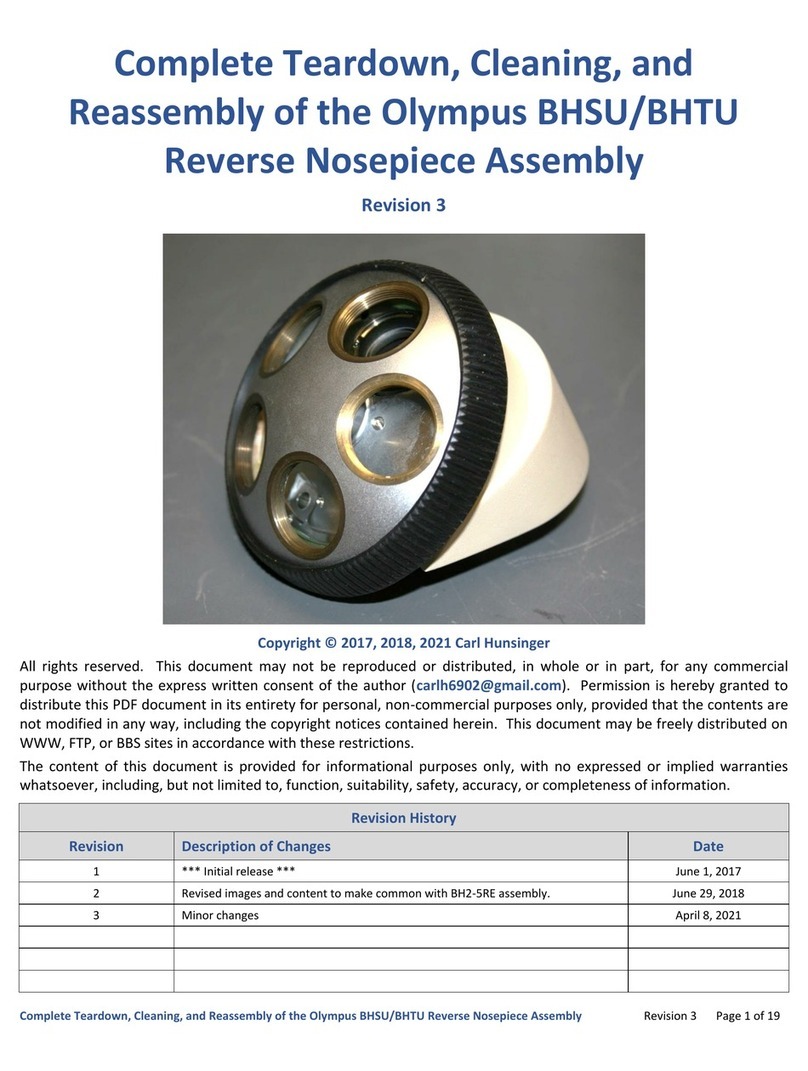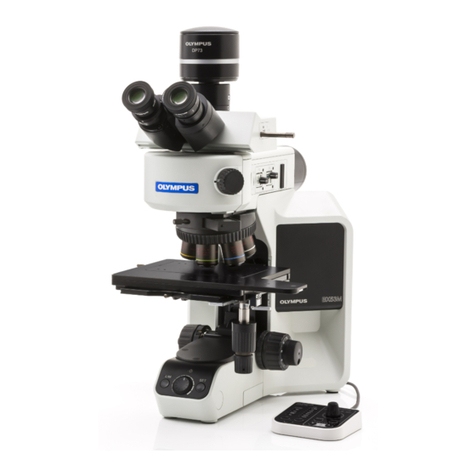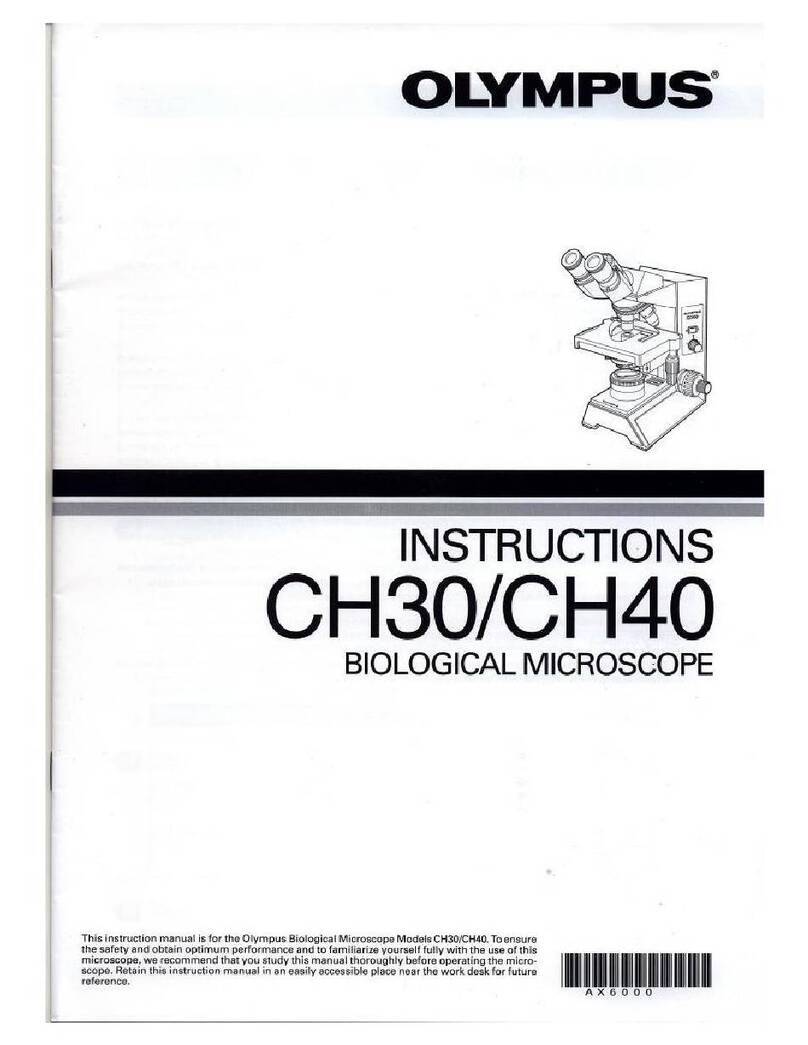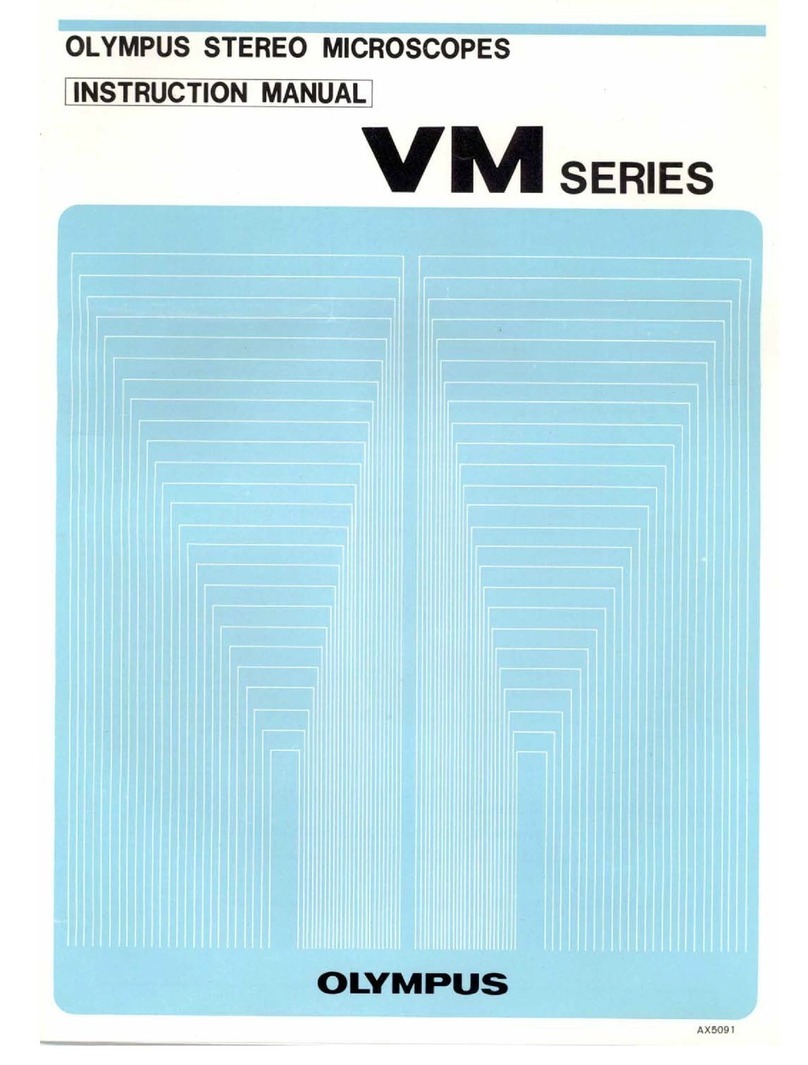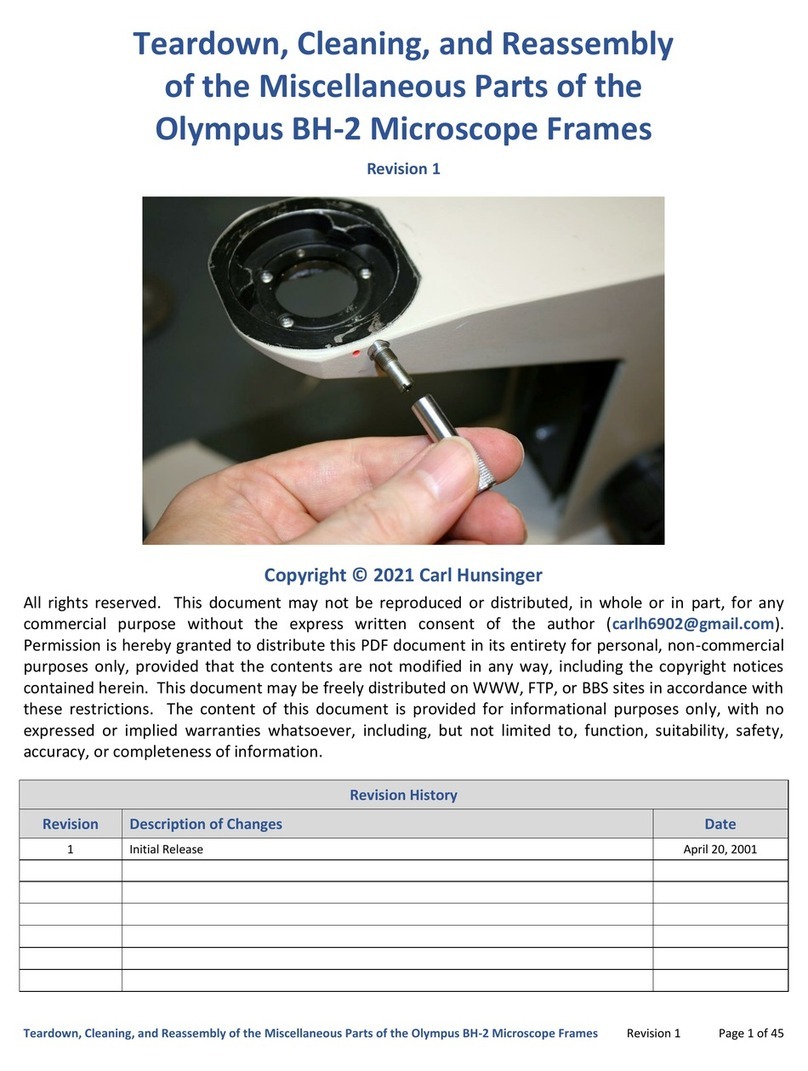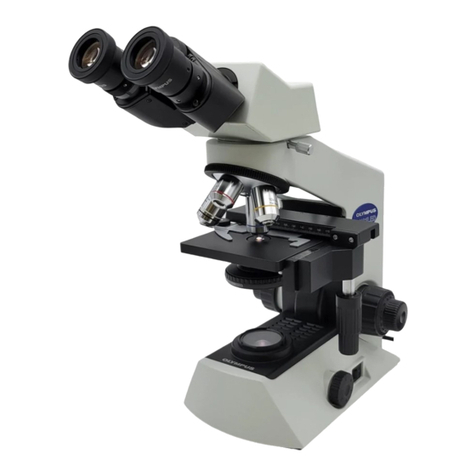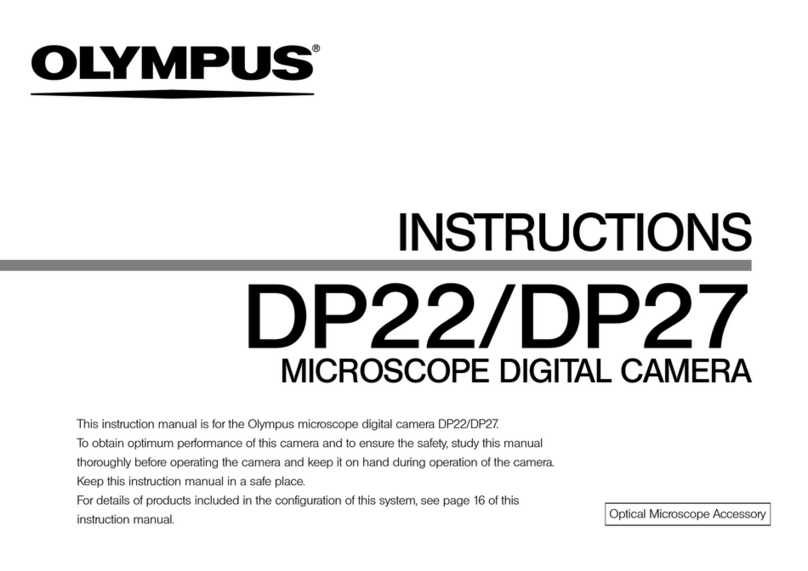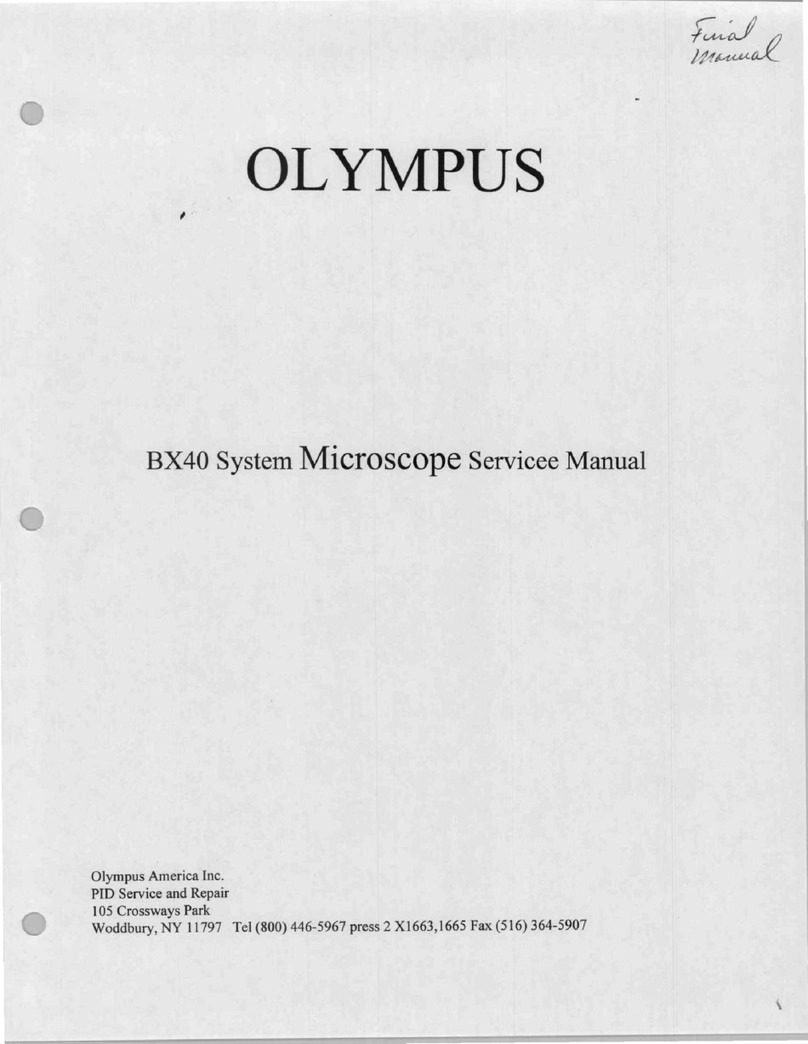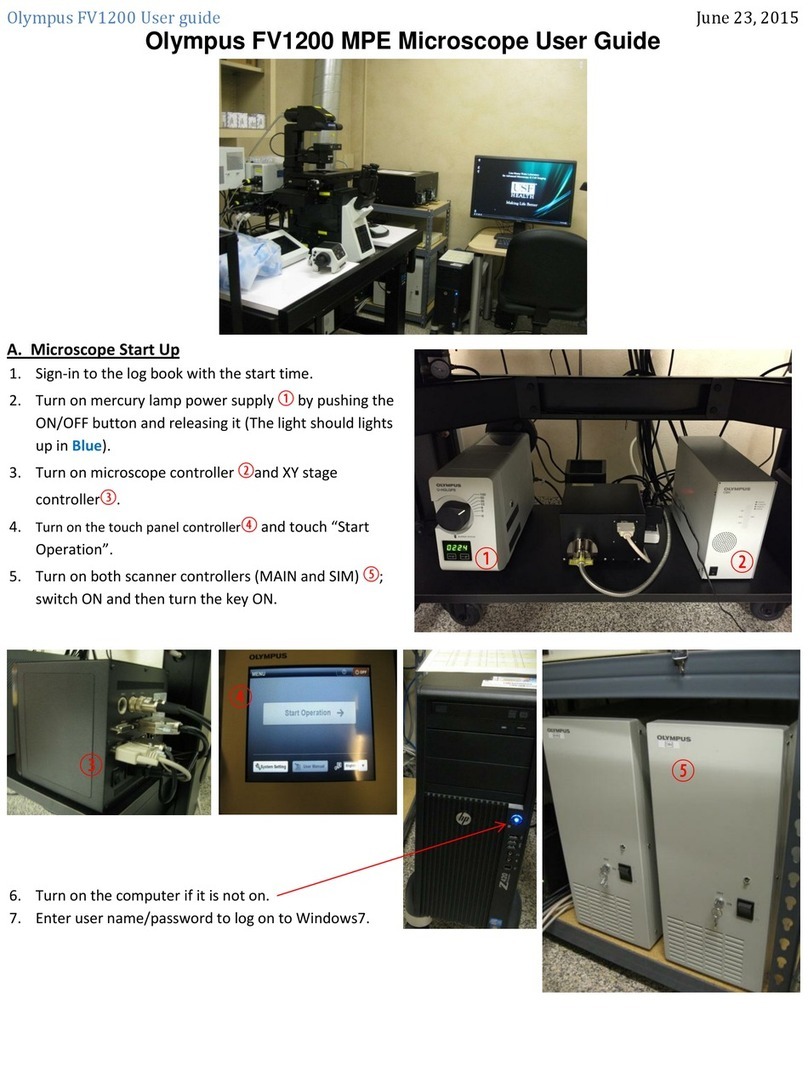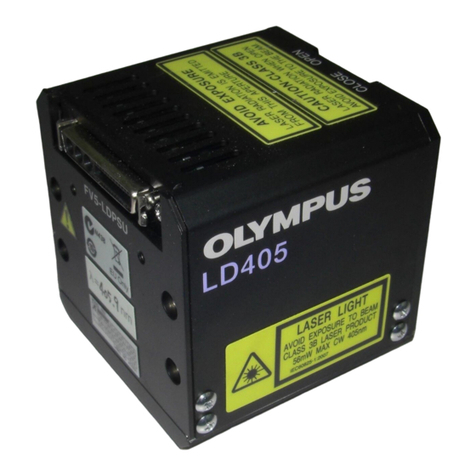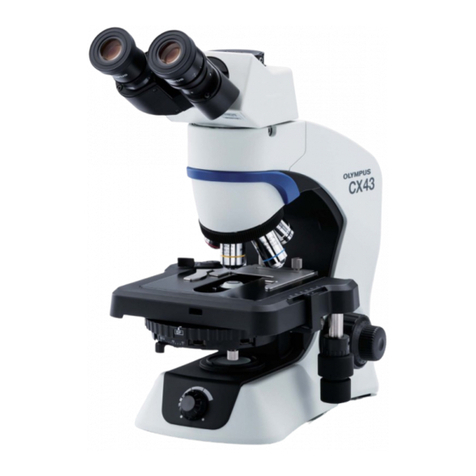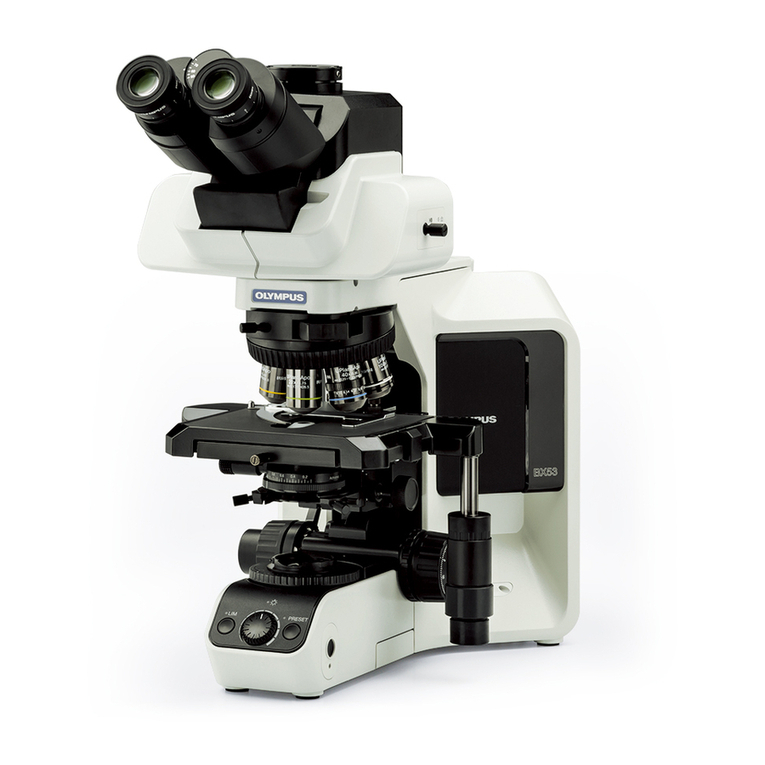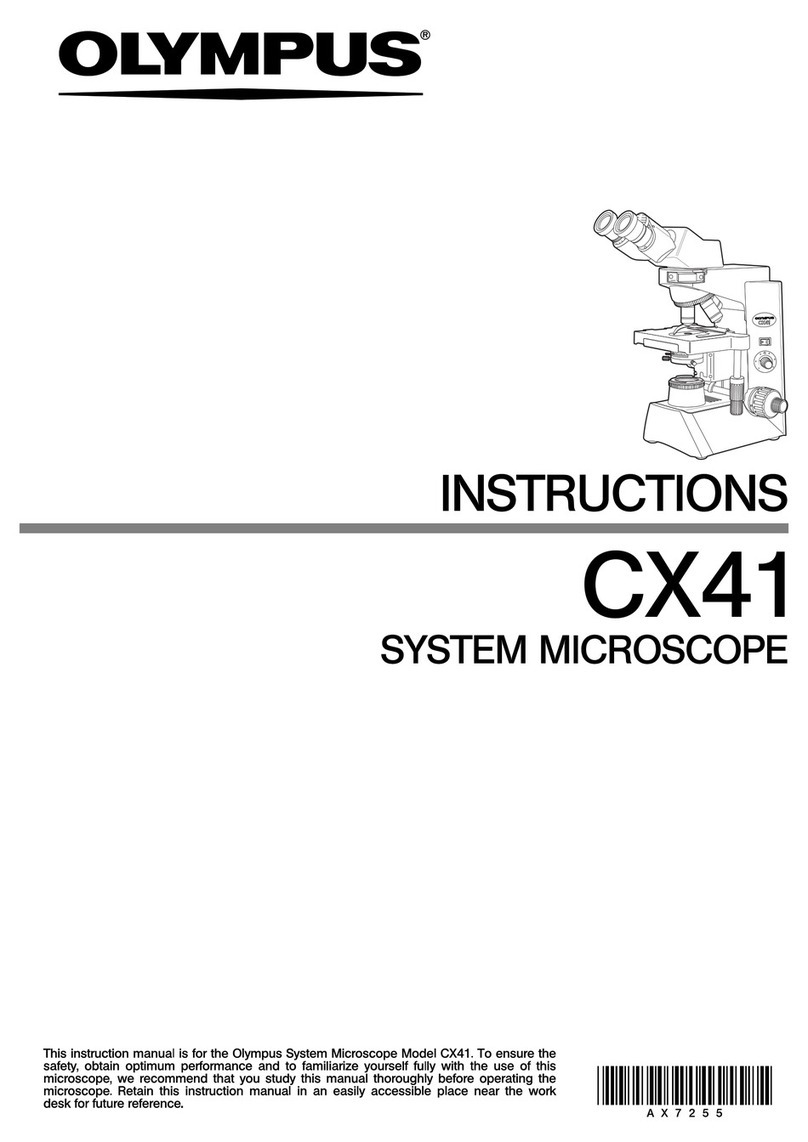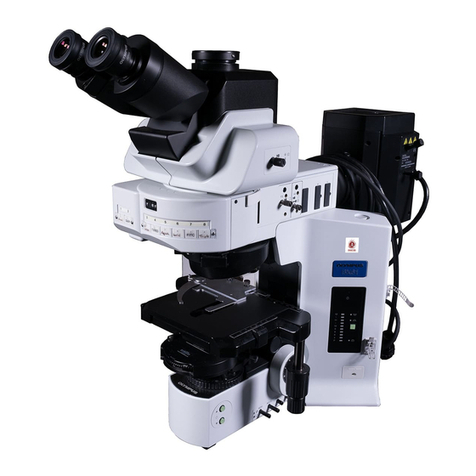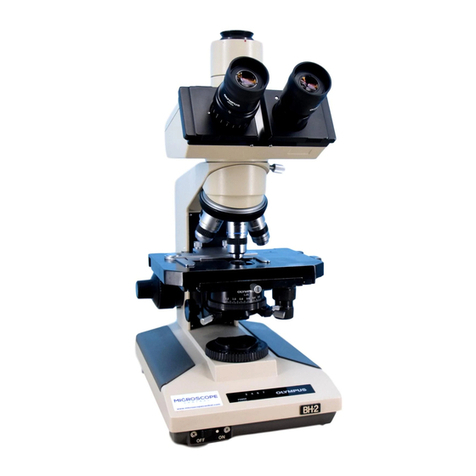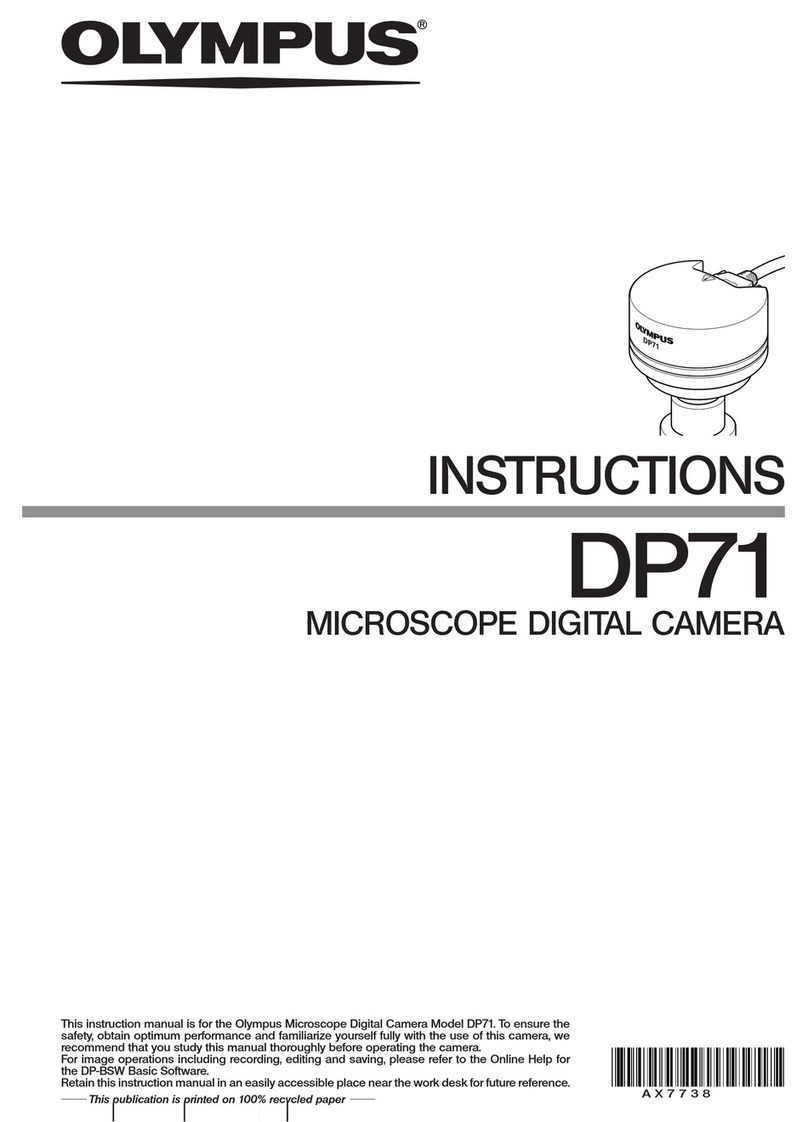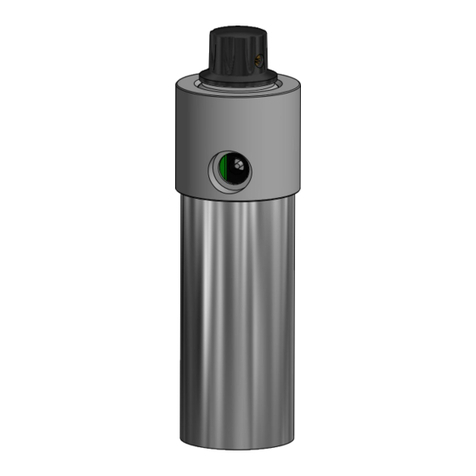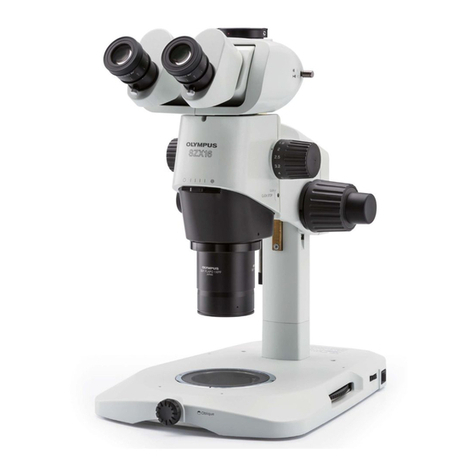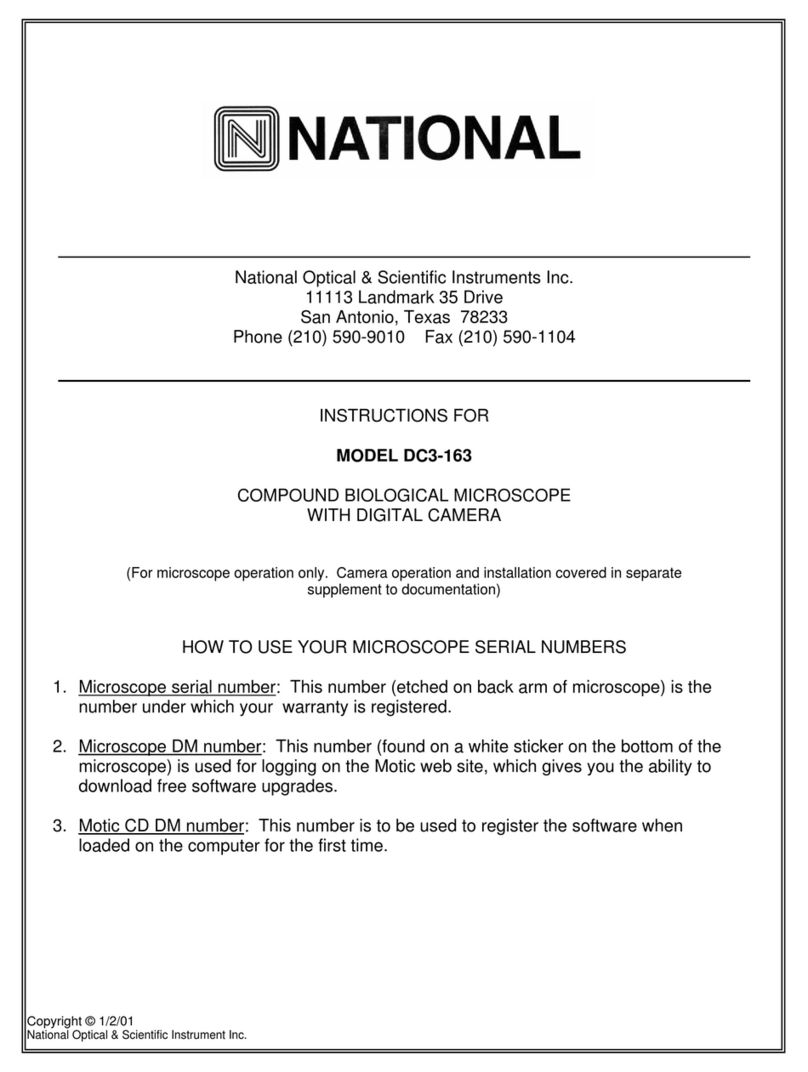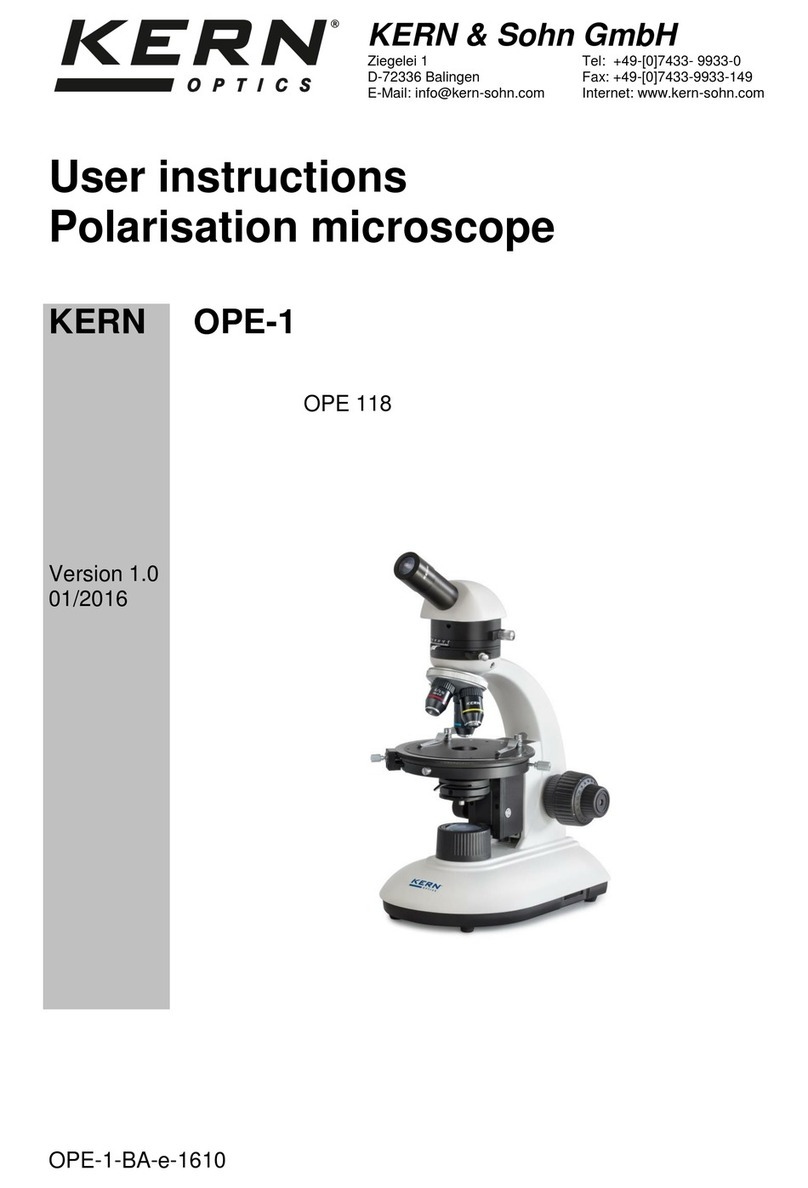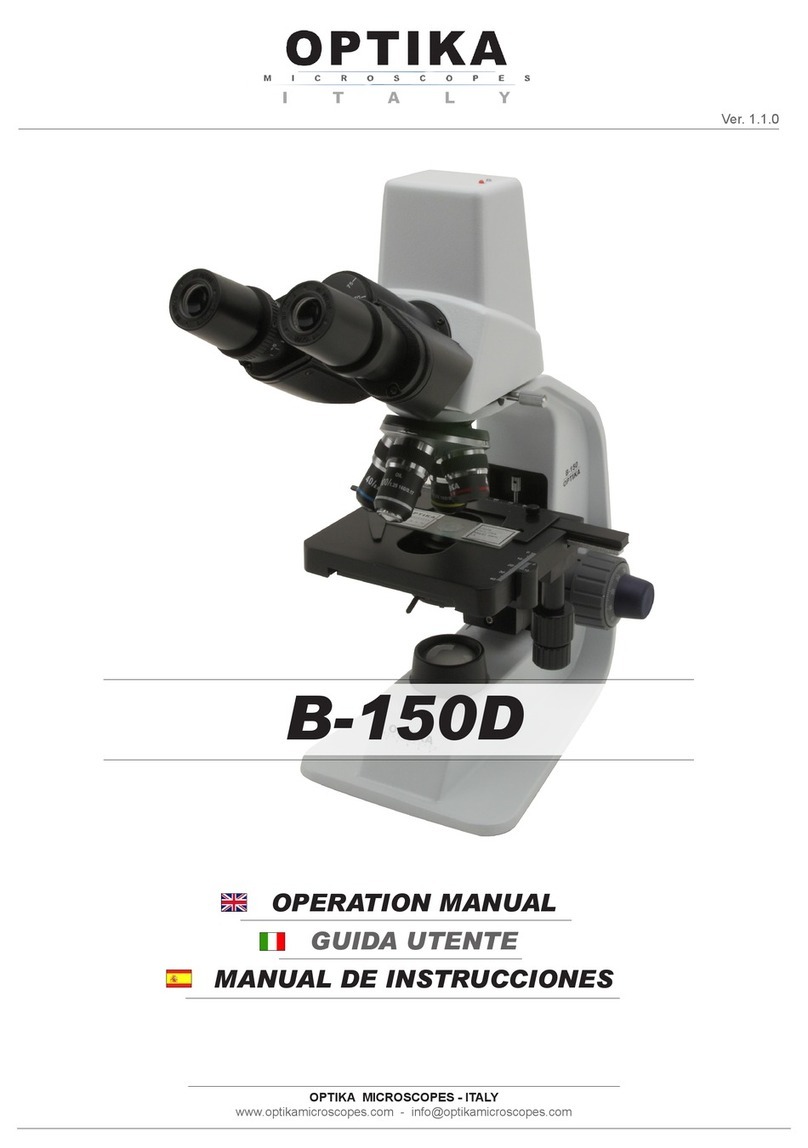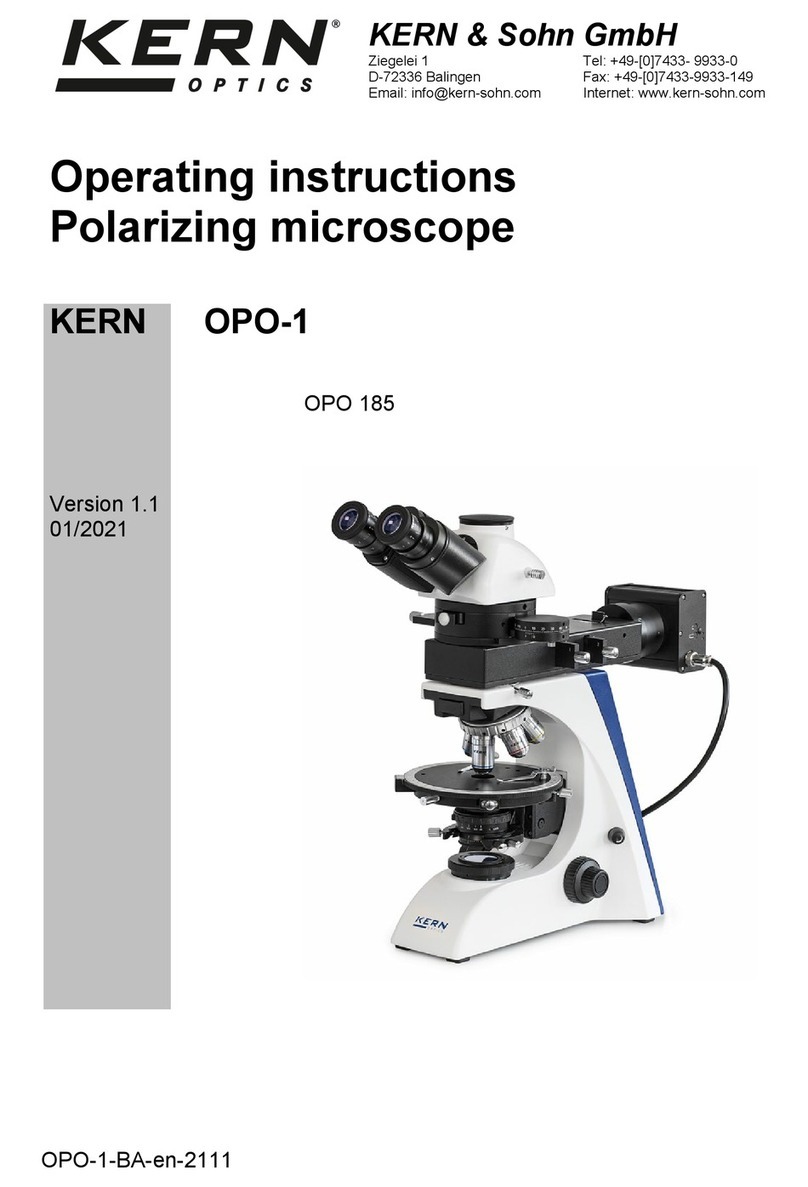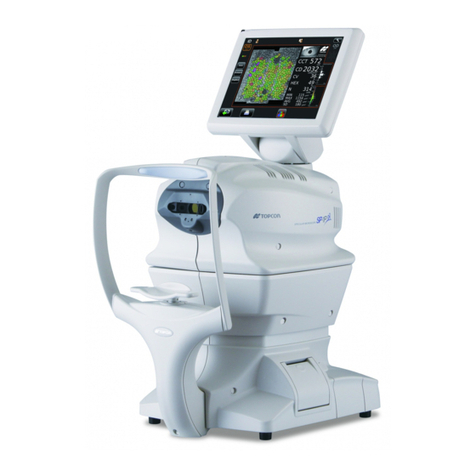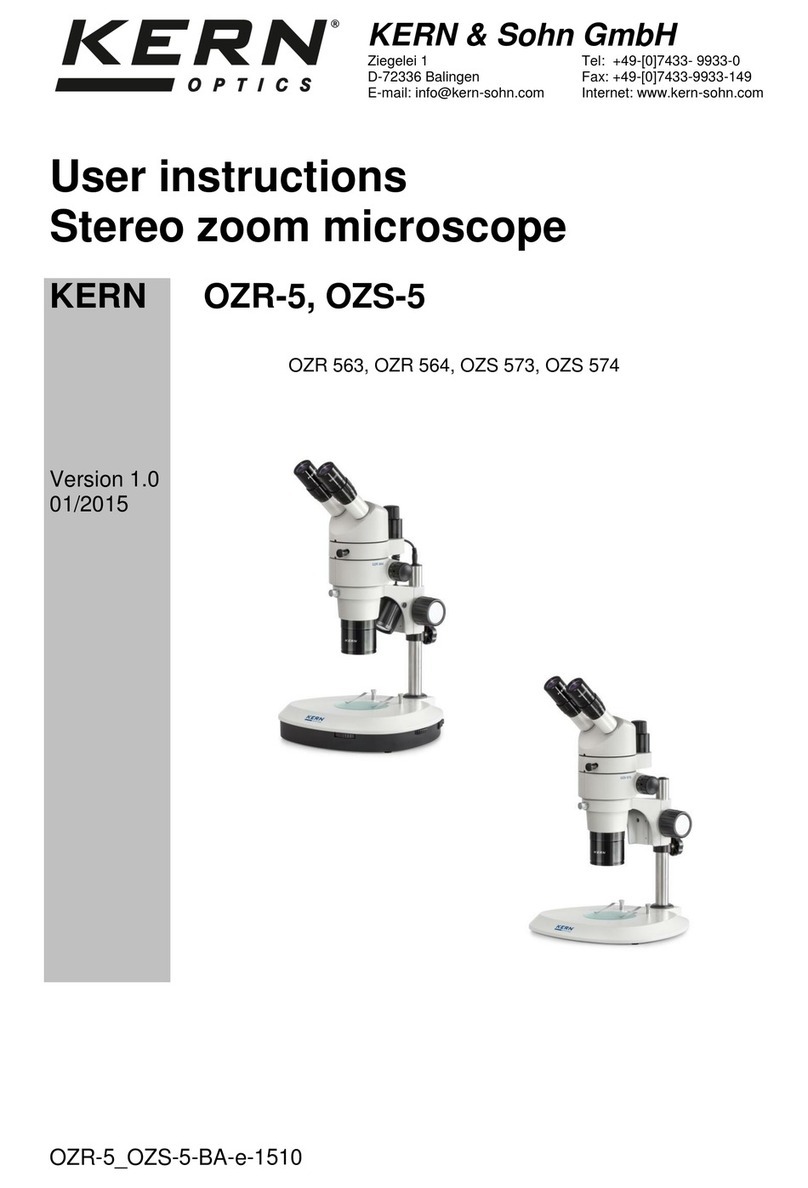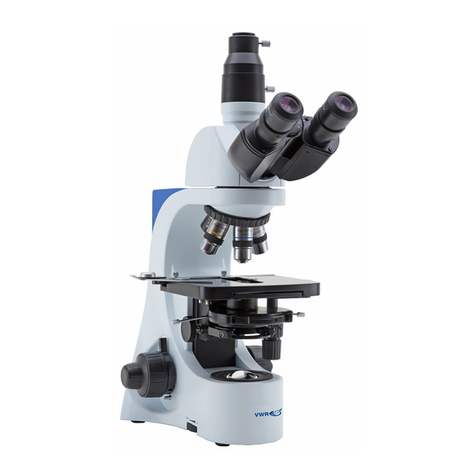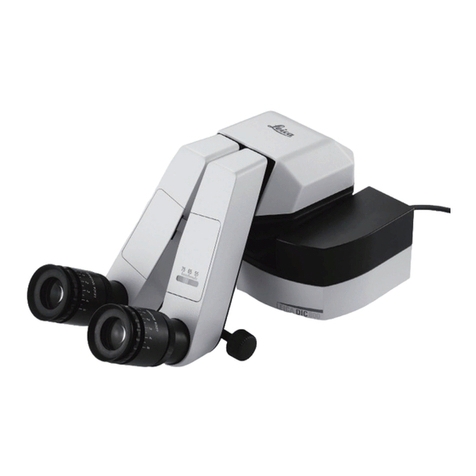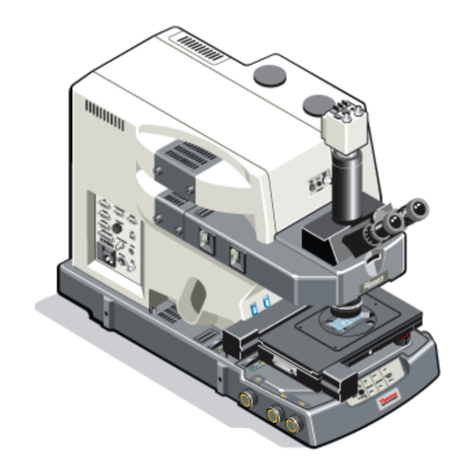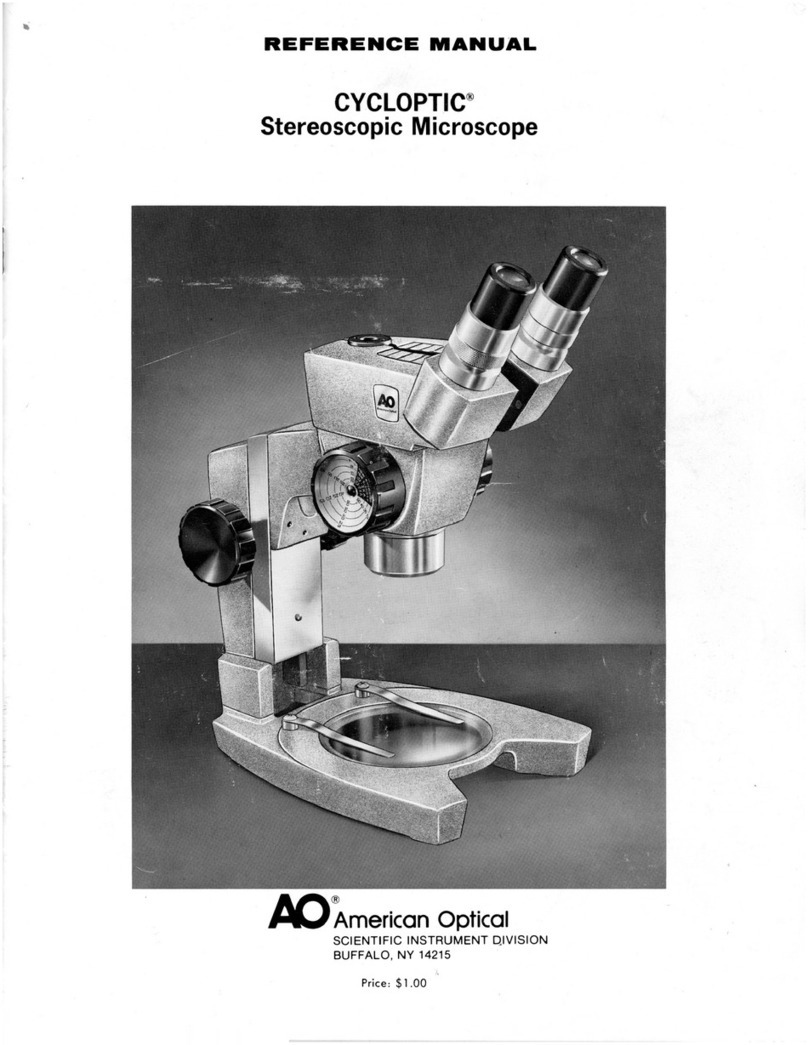
SZX16 REFLECTED FLUORESCENCE SYSTEM
2
If the equipment is used in a manner not specified by this manual, the safety of the user may be imperiled. In addition, the
equipment may also be damaged. Always use the equipment as outlined in the instruction manual.
1Getting Ready
1. This manual pertains only to the reflected fluorescence system. Before using this system together with the SZX16 microscope
and associated options, make sure that you have carefully read and understood their manuals, and understand how the
microscopic system should be used together.
2. The reflected fluorescence system is a precision instrument. Handle it with care and avoid subjecting it to sudden or
severe impact.
3. Do not use the equipment where it is subjected to direct sunlight, high temperature and humidity, dust or vibrations. (The
operating environment should be identical to that of the zoom microscope body.)
4. Always use the power cord provided by Olympus.
Before plugging the power cord, make sure that the main switch of the power supply unit is set to “ ” (OFF).
5. To allow heat from the system to dissipate well, reserve a distance of at least 10 cm around the lamp housing and power
supply unit.
6. The power cord can be used to cut the power supply in case of emergency. To make this possible, the power supply unit
should be installed so that the power input connector (on the rear of the power supply unit) or the power outlet is easily
accessible for unplugging in case of emergency.
2Maintenance and Storage
1. To clean the lenses and other glass components, simply blow dirty away using a commercially available blower and wipe
gently using a piece of cleaning paper (or clean gauze).
If a lens is stained with fingerprints or oil smudges, wipe it gauze slightly moistened with commercially available absolute
alcohol.
Since the absolute alcohol is highly flammable, it must be handled carefully.
Be sure to keep it away from open flames or potential sources of electrical sparks -- for example, electrical
equipment that is being switched on or off.
Also remember to always use it only in a well-ventilated room.
2. Do not use organic solvents to clean non-optical components. If smudges are difficult to clean, wipe them with a soft
cloth slightly moistened with a diluted neutral detergent.
3. Never disassemble any part of the equipment as this could cause malfunctions or reduced performance.
4. The burner has a service life period of 300 hours. For details on the conditions, see page 12.
When the hour counter on the power supply unit indicates 300 hours, set the main switch to “ ” (OFF) for safety, wait for
more than 10 minutes and replace the burner with a new one (see page 12.). Since the mercury burner seals high-
pressure gas in the glass tube, extended use after the service life may accumulate distortion in it and could eventually
cause it to burst. After the service life of the mercury has expired, dispose of it as an industrial waste.
5. When the microscope is not in use, be sure to set the main switch to “ " (OFF). After checking that the lamp housing has
been cooled down, place the dust-prevention cover on the microscope for storage.
6. When disposing of the system, be sure to follow your local regulations or ordinances.
3Caution
The following symbols are used to set off text in this instruction manual.
: Indicates that failure to follow the instructions in the warning could result in bodily harm to the
user and/or damage to equipment (including objects in the vicinity of the equipment).
# : Indicates that failure to follow the instructions could result in damage to the equipment.
}: Indicates commentary (for ease of operation and maintenance).
